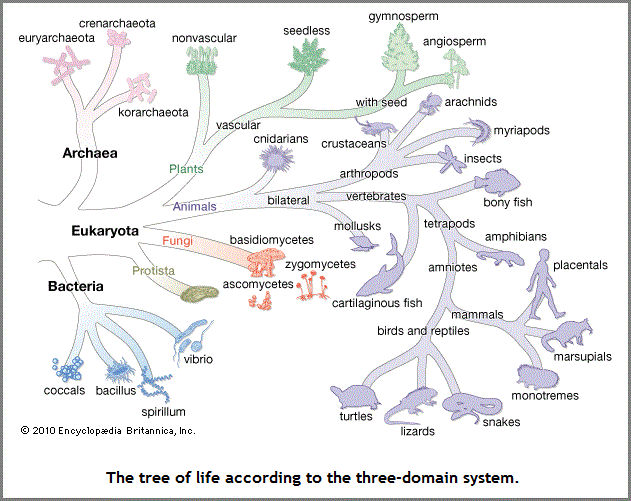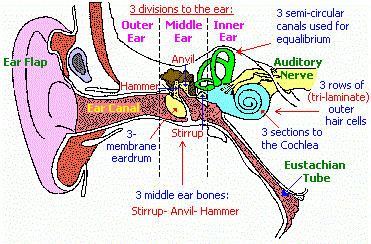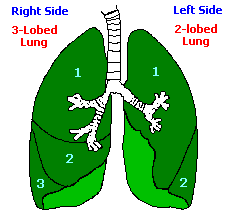page 1
Note: the contents of this page as well as those which precede and follow, must be read as a continuation and/or overlap in order that the continuity about a relationship to/with the dichotomous arrangement of the idea that one could possibly talk seriously about peace from a different perspective as well as the typical dichotomous assignment of Artificial Intelligence (such as the usage of zeros and ones used in computer programming) ... will not be lost (such as war being frequently used to describe an absence of peace and vice-versa). However, if your mind is prone to being distracted by timed or untimed commercialization (such as that seen in various types of American-based television, radio, news media and magazine publishing... not to mention the average classroom which carries over into the everyday workplace), you may be unable to sustain prolonged exposures to divergent ideas about a singular topic without becoming confused, unless the information is provided in a very simplistic manner.
Let's face it, humanity has a lousy definition, accompanying practice, and analysis of peace.
Simply stated, there is no common definition to the word Peace. Very often, it is associated with the idea concerning a social condition that exists in the an absence of war. Yet, in the absence of war there is no guarantee there will be an absence of poverty, homelessness, disease, crime, hunger, nor the very many kinds of business, government and religious exploitations of humanity... each striving to impose their own definitions of what peace is "supposed to be, what it is supposed to mean, what it is supposed to do".
If peace was an over-riding important preoccupation with humanity, the discussion and study of peace would be a mandatory requirement for all grade levels. There would be centers for peace in every single town, city, state and country. Instead of having named "courts of justice", we would have named "courts of judicial peace".
- We would outlaw every single company that makes war armaments or anything involving
the usage by any military service, including para-military groups.
- We would designate at least one day of the week for every citizen to attend
a community service involving a dedication to efforts for perpetuating peace, and
not leave in the hands of those whose main agenda is a belief or philosophy
involving a business, government or religion.
- We would outlaw every single would-be reformer's web page that did not dedicate at least one page to the topic of peace.
Indeed, look about the internet at well-meaning and well-intentioned sites that profess an interest in social reform... and you will find a stark absence of any page dedicated to a discussion of peace. It is a word whose definition has been limited not because humans are unable to be more expansive in their thinking, but because of an unrealized constraint, a limitation in cognition that is being imposed upon humanity by a physiologically-based reflexive effort to adapt to decaying environmental conditions which forces us to try to maintain a relative equilibrium by way of a conservation in the way humans think in order to survive in an environment that is dying.
Whereas all of us pay personal witness to the constraint, to the limitation whose effects surface with different symbols; the underlying image retains a similar structure. Again, it must be emphasized that although humanity has the capacity to think beyond the constraint which causes us to limit our definition and application of what the word "peace" can mean and do for us; it is necessary that we first recognize the existence of the cognitive constraint.
Let us describe it in numerical terms, even though some readers may prefer to use symbols they are more familiar with... whatever they may be. The constraint is seen in a 1-2-3, and 3-to-1 ratio, that can be described geometrically as well. Unfortunately, humanity's inclination to not be limited... tends to compound these basic arrangements into multiplicities which can give the impression of imagined liberty-of-mind, of soul, or purpose that corresponds with their desire to be expansively unrestricted. For example, in geometric terms, a single three-pointed triangle can be over-lapped to create a six-pointed star. Or a single cell can be multiplied into millions or billions. And yet, we discover the building blocks of life are arranged, by way of being on the third planet from a source of solar energy, by way of a triplet DNA and RNA source. No less, when speaking of proteins, we find a (1) primary, (2) secondary, (3) tertiary configuration, with as yet another "one" as a composite, though it is described as a quaternary structure.
Because humanity allows itself to be confined to a planet that is decaying, whose entire planetary system is decaying, and whose galaxy is undergoing a decay due to an expanding universe; our earth-born (and regulated) physiology is forced to adapt to the constraints imposed on it by the processes of decay. Hence, the lousy and restricted definitions applied to the word "peace" are an expression of the on-going decadence.
But let us be more succinct in our description. There is a wide-spread recurrence of using patterns-of-three in our behavior and ideas. This recurrence details the existence of an environmentally-directed imposition as a survival mechanism under the conditions to which humanity is subjected. Whereas humanity has the capacity to adapt to the usage of larger and more complex pattern structures from which different perceptions and ideologies could emerge; humanity's presence in/on/with the decaying Earth's planetary circumstances requires that humanity adapts to the usage of repetitions as an adaptive survival mechanism. If it were not so... if the human body was as expansive in its ability as some readers might want to think in terms of potentiality, then human physiology would "think" (respond to nature) in an effort to free itself from its constraints.
But we do not view our physiology as having the ability to think in terms that we generally ascribe to such an activity related to the brain. Although we denote it as being complex, having developed from Three Germ Layers (Ectoderm- Mesoderm- Endoderm) compared to less complex organisms having been derived from two or one germ layer; it can be viewed as being relatively primitive... like a flower using basic mechanisms to follow the Sun's path with respect to behavior defined as phototaxis, though other forms such as geotaxis (gravity), thermotaxis (temperature), and chemotaxis (chemicals) are known as well, when different species are looked at. Nonetheless, all such mechanisms describe responses to the environment within the physiological parameters of a given species. The same is true for humanity's physiology... with its emotional and psychological parameters contoured with respect to culture and language.

Wikipedia: Human Embryogenesis
However, many people engage in the exercise of looking for commonalities by making comparisons from different perspectives. One of these perspectives is anatomy. Before we take a look at the common theme found in anatomy, let us review an idea regarding overall life itself, though opinions differ:

Again, let us remind the reader that even though humanity may have the potential to be very expansive in its thinking, requirements for survival on a planet, in a planetary system that is decaying... imposes a constraint, a conservation that can be more easily realized if we use a symbol that generally strips away emotional content. What can be observed is the same recurring pattern, though the "one-up-manship" ego characteristic of humanity causes some to try to create the impression of a superior design through an effort of overlap as denoted by the previous triangle example.
http://www.lumen.luc.edu/lumen/MedEd/GrossAnatomy/Threes.html
The structure of the human body is organized into groups of three with remarkable frequency. I have listed several examples of this tendency by region. This list does not include structures contributing to form the many "triangles" in the body. If you know of any more, please let me know: --- John A. McNulty, PhD. ---mailto:jmcnulty@lumc.edu General 3 layers of skin: Epidermis- Dermis- Hypodermis 3 general venous circulations: Systemic- Pulmonary- Portal Embryology 3 germ layers: Endoderm- Mesoderm- Ectoderm 3 divisions of somites: Sclerotome- Dermatome- Myotome 3 definitive kidneys: Pronephros- Mesonephros- Metanephros 3 derivatives of skull: Desmo/dermatocranium- Splanchno/viscerocranium- Chondrocranium 3 initial embryonic divisions of the brain: Prosencephalon- Mesencephalon- Rhombencephalon Back 3 parts of the erector spinae m.: Iliocostalis- Longissimus- Spinalis (each are divided again into 3 parts) 3 parts of the transversospinalis m.: Semispinalis m.- Multifidus m.- Rotator m. 3 coverings of the spinal cord: Dura mater- Arachnoid- Pia 3 spaces surrounding spinal cord: Epidural- Subdural- Subarachnoid 3 borders of the scapula: Medial (vertebral)- Lateral- Superior 3 angles of the scapula Neck 3 parts of the axillary artery... 3rd part of axillary artery has 3 branches: Subscapular- Anterior humeral circumflex- Posterior humeral circumflex 3 Brachial plexus trunks: Upper- Middle- Lower 3 posterior Brachial plexus divisions 3 anterior Brachial plexus divisions) 3 Brachial plexus cords: (A) Lateral (B) Medial 3 branches off medial cord: Medial brachial- Medial antebrachial- Medial pectoral (C) Posterior 3 branches off posterior cord: Upper subscapular- Lower subscapular- Thoracodorsal 3 branches off the thyrocervical trunk: Transverse cervical- Suprascapular- Inferior thyroid 3 veins drain the thyroid gland:
3 scalene muscles: Anterior- Middle- Posterior 3 muscles attach to spine of C2:
3 constrictor muscles: Superior- Middle- Inferior 3 parts of the pharynx: Nasopharynx- Oropharynx- Laryngeopharynx 3 parts to the hyoid bone: Body- Greater horn- Lesser horn 3 structures inside carotid sheath: Common carotid artery- Internal jugular vein- Vagus nerve 3 ganglia in sympathetic cervical chain: Superior (magnum)- Middle- Inferior (stellate) Head 3 parts of the maxillary artery: Mandibular- Pterygoid- Pterygopalatine 3 divisions of the trigeminal nerve:
3 cranial fossae: Anterior- Middle- Posterior 3 nuchal (nape of the neck) lines: Inferior- Superior- Highest 3 layers to calvarium: Outer table- Diploe- Inner table 3 clinoid processes of the sphenoid bone: Anterior- Middle- Posterior 3 cranial nerves (C.N.) pass through jugular foramen: C.N. IX- C.N. X- C.N. XI 3 cranial nerves (C.N.) travel in the wall of the cavernous sinus: C.N. III- C.N. IV- C.N. V 3 cranial nerves (C.N.) carry parasympathetics to the head: C.N. III- C.N. VII- C.N. IX 3 nasal conchae: Superior- Middle- Inferior 3 principal components of the temporal bone: Squama- Petro/mastoid- Tympanic ring 3 bones of the upper jaw/palate: Premaxilla- Maxilla- Palatine 3 salivary glands: Parotid- Submaxillary- Sublingual Note: At this juncture, it is of value to note that we humans have a 1st, 2nd and 3rd molar designation as well as the 3rd molars being designated the wisdom teeth. However, it is of notable interest to provide an illustration of the number of teeth in different animals, because of a "0-1,2,3" differentiation is displayed and will be of correlational significance later in the discussion:  3 muscles innervated by 3 cranial nerves attach to the styloid process:
3 layers in tympanic membrane [eardrum] (derived from 3 germ layers) 3 cranial nerves innervate the external tympanum: C.N. V- C.N. VII- C.N. X 3 middle ear bones: Incus- Malleus- Stapes 3 parts of the ear: Outer- Middle- Inner 3 semicircular canals (of the ear) 3 membranes of the cochlea: Reissner- Tectorial- Basilar 3 intrinsic muscles of the tongue: Longitudinal- Vertical- Transverse 3 muscles elevate the mandible: Masseter m.- Temporalis m.- Medial pterygoid m. 3 branches of the posterior auricular artery:
Note: With respect to hearing, speech and grammar, see the following link: Three-patterned ear structure  3 branches of the ophthalmic nerve (VI): Nasociliary n.- Frontal n.- Lacrimal n. 3 superior alveolar nerves:
3 types of deciduous teeth: Incisors- Canine- Molars 3 layers of dentition: Enamel- Dentin- Pulp 3 general layers of the eye: Retinal- Choroidal/ciliary body- Scleral/corneal 3 color receptors in (eye) cone cells: Red- Blue- Yellow 3 nerves to the larynx:
3 cerebral arteries: Anterior- Middle- Posterior 3 arteries supply the cerebellum:
Shoulder 3 muscles attach to coracoid process: Coracobrachialis- Pectoralis minor- Short head of biceps 3 parts of the axillary artery... (3rd part has 3 branches):
3 muscles of the rotator cuff are rotators 3 glenohumeral ligaments: Superior- Middle- Inferior Arm 3 muscles in anterior compartment: Biceps brachii- Coracobrachialis- Brachialis 3 heads of triceps brachii m.: Long- Lateral- Medial 3 muscles attach to greater tubercle of the humerus: Supraspinatus- Infraspinatus- Teres minor 3 parts of the ulnar collateral ligament of the elbow: Anterior- Posterior- Oblique Forearm 3 muscles in deep anterior compartment:
Hand 3 muscles in thenar eminence:
3 muscles in hypothenar compartment:
3 phalanges in fingers: Proximal- Middle- Distal 3 palmer interossei Thorax 3 compartments: Mediastinum- Left pleural cavity- Right pleural cavity 3 branches off the aortic arch:
3 parts of the aorta: Ascending- Arch- Descending 3 principal surfaces of the pleura: Costal- Diaphragmatic- Mediastinal (the cupola is the superior extension) 3 lobes of the right lung: Superior- Middle- Inferior Note: 3 lobes on the right, 2 on the left. 3 (tricuspid) heart valves on the right, 2 (mitral/bicuspid) valves on the left. And thinking in terms of a stroke, where the left hemisphere brain is affected, the right side is affected and vice versa. Attributes of the left brain hemisphere are "three" organized while attributes aligned with the right hemisphere are "two" organized. It is extremely important that the distinction be made since a discussion of the brain's development... and the development of society have parallels.
3 bronchopulmonary segments of the upper right lobe: Apical- Posterior- Anterior 3 muscles of interthoracic wall:
3 false ribs on each side 3 cusps of the semilunar aortic and pulmonary valves of the heart 3 cusps of the tricuspid (heart) valve 3 main arteries of the heart: Circumflex- Anterior interventricular- Right coronary 3 splanchnic nerves: Greater- Lesser- Least Abdomen 3 folds in anterior abdominal wall:
3 muscles contribute to linea semilunaris/rectus abdominus aponeurosis:
3 openings in diaphragm: Aortic- Esophageal- Inferior vena cava 3 arcuate ligaments of diaphragm:
3 parts of the stomach: Fundus- Body- Pylorus 3 smooth muscle layers of the stomach: Oblique- Longitudinal- Circular 3 unpaired branches of the abdominal aorta:
3 branches of celiac a.: Left gastric a.- Splenic a.- Common hepatic a. 3 branches of common hepatic a.: Right gastric a.- Proper hepatic a.- Gastroduodenal a. 3 arterial branches supply adrenal glands: Inferior phrenic- Aorta- Renal 3 structures lie within porta hepatis: Proper hepatic a.- Portal vein- Common bile duct 3 principal veins contribute to the portal vein:
3 parts of the small intestine: Duodenum- Jejunum- Ileum 3 parts of large intestine: Ascending- Transverse- Descending 3 tenia (band-like structure) of large intestine 3 coverings of the spermatic cord:
3 vessels in the umbilical cord: Umbilical vein and 2 umbilical arteries Pelvis and Perineum 3 bones in os coxae: Pubis- Ilium- Ischium 3 parts of the pubis: Body- Superior ramus- Inferior ramus 3 foramina in the pelvis:
3 gluteus muscles: Gluteus maximus- Gluteus medius- Gluteus minimus 3 rectal arteries:
3 branches of the posterior division of internal iliac artery:
3 openings in the urinary bladder: Left ureter- Right ureter- Urethra 3 parts of the urethra: Prostatic- Membranous- Spongy 3 parts of the uterus: Fundus- Body- Cervix 3 erectile compartments of the penis:
3 muscles in superficial perineal pouch:
3 arteries supply the rectum:
3 valves in the rectum: Superior- Middle- Inferior Gluteus 3 gluteal muscles: Gluteus maximus- Gluteus medius- Gluteus minimus 3 muscles innervated by superior gluteal n.:
Thigh 3 hamstring muscles: Biceps femoris- Semitendinosus- Semimembranosus 3 compartments in the femoral sheath 3 muscular compartments of the thigh: Anterior- Medial- Posterior 3 branches of the lateral femoral circumflex a.:
3 muscles contribute to the pes anserinus: Sartorius- Semitendinosus- Gracilis Leg 3 compartments in the leg... (3 muscles in anterior compartment:)
Foot 3 cuneiform bones: Medial- Intermediate- Lateral 3 phalanges in toes: Proximal- Middle- Distal 3 plantar interossei (related to the sole of the foot) Miscellaneous 3 exams in the course http://www.lumen.luc.edu/lumen/MedEd/GrossAnatomy/Threes.html |
Note:
Dr. McNulty's comment about the many "Triangles" in the human body is a reference easily passed over by many readers. Some think of a triangle in terms only of a geometric representation of the "three," but it is more than this when be think in terms of what may have influenced the many three-patterned structures in the human body. In so doing, we need to account not only for a pattern-of-three serial event (1 + 1 + 1) that could very well develop into a 1 and then 2 and then 3, but one that also exhibits a triangular form that would have impressed this form upon our physiology/anatomy. However, we have also found the existence of examples exhibiting a 1 from 3, 3 into 1, or 3 to 1 (1 to 3) characterization, thus requiring that which influenced (influences) "threes" in our anatomical structure, to also have a triangle and 3 -to- 1 pattern.
In other words, that which has influenced humanity to have an anatomy in threes, may have as well influenced humanity to design multiple ideas with three-patterned structures. This influence may still be present and under-going changes due to the pattern of decay related to the planet and its planetary system. The above conservation pattern revealed as a three-formula, may become more conserved in the future, though we are experiencing the effects right now. Hence, our definition of Peace is subjected to the dictates of changing environmental conditions because our physiology and thus our minds, are responsive as well.
(We have only just begun this journey)
Date of Origination: Tuesday, 13-Dec-2016... 03:23 AM
Date of initial posting: Wednesday, 14-Dec-2016... 10:31 AM
Updated posting: Saturday, 31-March-2018... 11:23 AM


